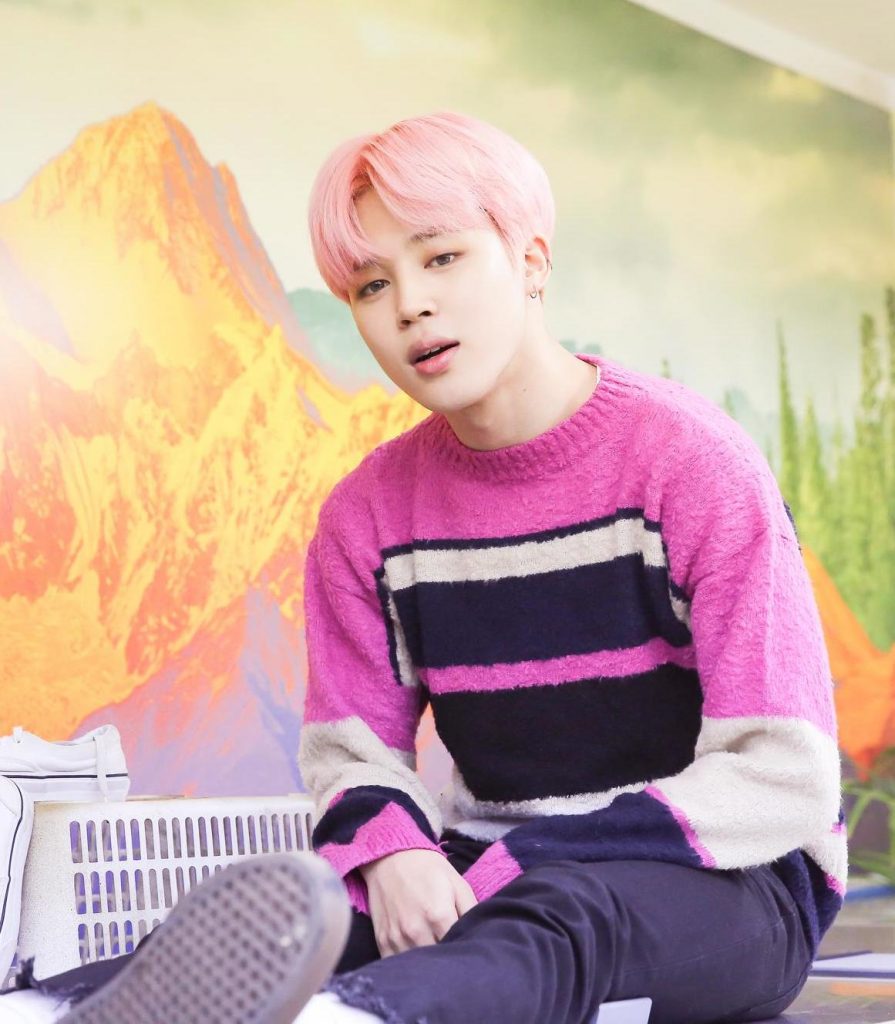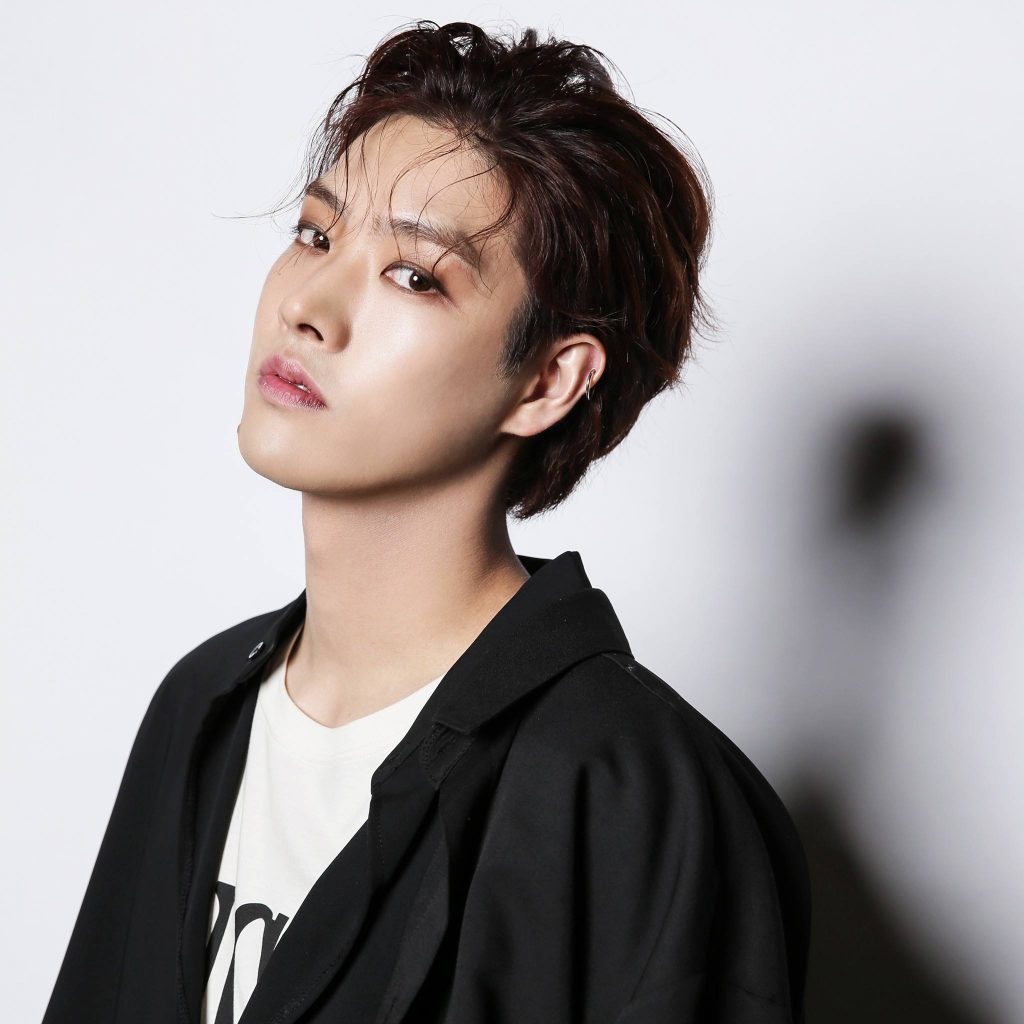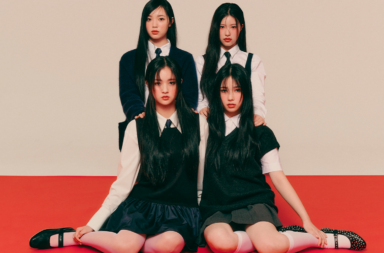
Idols’ scandals rarely make headlines outside of Korea and the K-pop fandom. But when a Japanese television appearance by BTS was canceled in early November, it became international news covered by The New York Times, CNN, BBC News and more. At the same time, Japanese-Korean girl group Iz One (often stylized as IZ*ONE) was navigating controversies amid their debut back in Korea.
The treatment of both groups reveals how Japan and Korea are continuing to use pop music both to work with and against each other in the international political sphere. Just two days before BTS’s scandal, the South Korean supreme court ruled that Japan’s Nippon Steel & Sumitomo Metal Corporation must compensate Koreans for their forced labor during World War II. Japan denounced the decision as “unthinkable,” pushing back against Korea’s boldness.
Subsequently, an old photo emerged of member Jimin from 2017. In it, he was wearing a shirt featuring an image of the mushroom cloud that appeared after an atomic bomb was dropped on Nagasaki, Japan, in 1945, killing more than 70,000 people. The image is next to text that reads “Patriotism Our History Liberation Korea.” In response, Japanese TV program Music Station canceled BTS’s scheduled live performance. This prompted a slew of news reports and concern from K-pop fans in Japan and abroad, revealing how political K-pop truly is, especially between these historically antagonistic countries.
Before BTS ruffled feathers in Japan, they caused controversy back in Korea because of their Japanese album. Along with “Fake Love/Airplane Pt. 2,” BTS was set to release another Japanese single titled “Bird,” written by Japanese producer Yasushi Akimoto. Akimoto is the creator of the idol group AKB48, but he is also notorious in Korea for his far-right politics and use of the Rising Sun flag in AKB48’s costumes. For Koreans, this historic war flag is an oppressive symbol of Japanese colonial rule in Korea. Due to the backlash, Big Hit ultimately dropped the song from BTS’s album, revealing how political considerations run both ways.
Despite such condemnations of Akimoto, members of AKB48 were featured in the third season of the popular Produce franchise, Produce 48. While the Japanese contestants could have easily been villainized and definitely did face some online hate, Koreans and international viewers alike rallied around the underdog Japanese idols. Though the show characterized them as lacking due to a difference in idol training and culture, the young women were able to earn supporters with their charm and humble, hard-working attitudes.

Ultimately three Japanese contestants, Sakura Miyawaki, Nako Yabuki, and Hitomi Honda, made the final cut for Iz One. The 12-member group’s debut album is primarily in Korean, but it does feature the Akimoto-penned Japanese-language track “We’re in Love, Right?,” which was performed on the show’s finale. Broadcasting stations KBS and SBS both deemed the song unfit for broadcast for having Japanese lyrics. This rule continues to be in effect since its implementation after Japanese colonial rule ended in 1945. Despite Korea’s eagerness to collaborate with a Japanese idol group, the country still has its guard up when it comes to Japanese language and culture. Even with this policing of the group, Iz One notched their first win with “La Vie En Rose” on M Countdown— ironically on the same day that BTS was banned from their Japanese TV appearance.
Iz One seems to be positively building bridges from within Korea and BTS’ success in Japan hasn’t slowed despite the recent scandal. The groups’ current successes are built on the back of a long and storied history of K-pop in Japan. Over a decade of work by Korean companies to gain political and economic advantages has lead to an unprecedented cross-cultural exchange currently taking place between Japan and Korea.
SM Entertainment can be credited with first breaking into Japan, the second-largest music industry in the world behind the U.S. Its idols first began singing in Japanese and Chinese in 1998, but BoA became the first Korean crossover superstar. SM spent two years and $3 million USD training the then-13-year-old star, including teaching her to fluently sing and speak in Japanese. SM was also the first Korean label to partner with overseas record companies, such as Japan’s Avex Group. SM’s then-CEO Kim Young-min was raised in Japan and was given freedom to pioneer exporting the company’s acts. He was also key in tapping into the new video platform YouTube in 2008, which would go on to become a key part of the Hallyu wave.

This success formula was replicated with second-generation K-pop groups TVXQ and Girls’ Generation. YG and JYP also got in on the act, with the groups Big Bang, 2NE1, and 2PM speaking and singing in Japanese and touring in Japan. In 2010, Japanese business magazine Nikkei put Girls’ Generation on its cover alongside a headline declaring them “the next Samsung.” In a decade, Japan had become the biggest consumers of Hallyu content and products.
After almost a decade of K-pop infiltration, Japan began to show backlash and anti-K-pop sentiments. It slowed the flow of K-content by limiting TV airings of K-dramas and K-pop. This pushback coincided with renewed political tensions. In 2012, then-South Korean president Lee Myung-bak visited the disputed Dokdo (Takeshima in Japanese) islands. The islands’ ownership has been unresolved since the end of World War II, with both countries insisting on their claim over them. His visit incensed the Japanese government, severed diplomatic relations, and sparked afresh anti-Korean sentiments. Despite the crackdown, K-pop’s popularity in Japan continued.
K-pop’s success in Japan and around the world inspired the next generation of Japanese youth. K-pop’s worldwide cultural influence surpassed that of Japan, whose entertainment industry became more insular and isolated. So for talented Japanese kids dreaming of global stardom, Korea had more to offer.
At the same time, Korean companies came up with a new strategy for gaining bigger strides in Japan. For over a decade, companies had been teaching idols Japanese and promoting in Japan. But then they began recruiting Japanese members.
While K-pop had a couple half-Japanese, half-Korean idols with DMTN‘s Simon and M.I.B‘s Kangnam, as well as a Japanese national with Rania‘s Riko, companies set out to recruit fully foreign members that had the social capital to appeal to new fans in that member’s home country.
JYP’s Park Jin-young told CNBC:
“We’re trying to figure out the next stage … We can’t just keep sending over Korean stars forever, we need to find the next thing. Now, I want to build with foreign talent and create something with young talented kids from Japan and China.”
SM held global auditions in Japan for the very first time in 2011. That year, they recruited their first Japanese idol, Yuta, who debuted with NCT 127 in 2016. He was inspired to pursue singing and dancing after seeing a TV performance by TVXQ.

JYP also began heavily recruiting in Japan, casting Sana, Momo, and Mina, who would go on to become the “J-trinity” of girl group Twice. Momo had already been exposed to Korean entertainment as her mother was a fan of Rain. She appeared in Korean singer Lexy‘s “Ma People” music video as a dancer and later auditioned for Superstar K3′s preliminary round in Japan, saying on the show that she wanted to be like Girls’ Generation. This made her receptive to the chance of moving to Korea to become a trainee after JYP discovered her on YouTube. Mina was first exposed to K-pop through a friend in middle school. Together, they did dance covers of songs from Girls’ Generation. She was street casted but, like Momo, understood the opportunity of coming to Korea because of her knowledge of K-pop.
Other notable Japanese idols include Pentagon‘s rapper Yuto, who was also initially signed as a JYP trainee. There is also Takada Kenta, the only Japanese contestant on season two of Produce 101. Like other Japanese idols, his dream to become a K-pop star was inspired by his fandom. Kenta was a huge K-pop fan, attending fansigns and concerts for Teen Top and Highlight. Though he failed to make the cut for Wanna One, he was beloved enough by Korean fans to join JBJ and is now promoting with subunit JBJ95.
For the most part, Japanese idols like Kenta have been accepted by Korean fans, largely because of the way they have adapted and changed to fit Korea’s culture, molded by Korean companies to extol their virtues. This model arose from a unique experiment in the evolution of Japanese K-idols: Cross Gene.
Unlike Korean-born and -managed groups like Twice, Cross Gene was created by the Korean arm of Japanese company Amuse. The group, which debuted in 2012, was a multinational group made up of Korean, Japanese, and Chinese members, with Japanese member Takuya serving as leader. The group meant to “cross the superior genes of each country to create one perfect group.” Unfortunately, the group was ahead of its time. Regardless, Takuya was K-pop’s first Japanese idol. The group’s lineup was later rejigged, with Chinese members J.G. and Casper departing, and Korean member Seyoung joining the group and replacing Takuya as leader. Takuya stepping down from the leadership role, combined with his charm and diplomatic work, helped open up Koreans to the idea of a Japanese K-idol.

In 2014, he served as the Japanese representative on the new variety show Abnormal Summit. His popularity led to appearances as an MC and presenter at that year’s Melon Music Awards. For his efforts, he was awarded the the International Exchange Daesang prize at the Korean Wave Awards for his work in cross-cultural exchange between Japan and Korea. While Cross Gene hasn’t reached the heights of subsequent groups like Twice, Takuya laid out a roadmap for how Japanese stars can be accepted by the public. With the newest generation of Japanese idols being embraced in Korea, K-pop can look outward to make its biggest ever push into the Japanese market.
And this new method of recruiting and molding foreign talent is working. Twice is extremely successful in Japan. All five of the group’s Japanese album and single releases have gone platinum. They are the first Korean girl group to go platinum since Girls’ Generation and Kara did so in 2012. They were also the first K-pop group to be invited to perform at New Year’s Eve mega-concert Kohaku Uta Gassen since 2011.
BTS’s Japanese album also went platinum earlier this year, and their 2017 single “MIC Drop/DNA/Crystal Snow” went double platinum. The album finished the year at No. 13 on Oricon’s yearly singles chart, the highest ranking ever for a K-pop act. By topping the charts and selling out dome tours, both Twice and BTS have reestablished K-pop’s grip on the country. This success has coincided with Korea flexing its political power with the Supreme Court ruling, and Japan attempting to rebuff it.
Much like with Dokdo in 2012, Korea took advantage of its international influence to make a political move, and Japan responded by lashing out at the source of that influence, criticizing the country’s prized, prominent idols. And while it can’t outright ban K-pop, Japan is trying to control the narrative started by Korea. For example, in Japan, Twice’s Japanese members are heralded as “soft power superhumans, helping Japan’s image in Korea.” One the other hand, Twice’s Korean members are fair game for political means. After Twice was invited back to Kohaku Uta Gassen this year, a Japanese right-wing politician called Korean member Dahyun an “anti-Japanese activist” for wearing a T-shirt from a charity that supports former Korean “comfort women.”
While Japan holds economic power, Korea has the upper hand in terms of cultural power. Japan, long ambivalent to making its pop culture flow with Korea two-way, is finally attempting to take advantage of the long-established exchange with mutually beneficial projects like Iz One. As new acts such as GFriend and Seventeen attempt to push into the Japanese market on top of dominant acts like BTS and Twice, Japan is also trying to find ways to counteract both the Hallyu wave and South Korea’s recent political boldness. Even though K-pop is more intertwined with Japan than ever before, each country is still looking out for itself. The incident with BTS proves that this evolving pop music alliance is tinged with political tension that could boil over again, undoing the progress made in the past few years.
(CNN [1] [2], The New York Times [1] [2], BBC News, Reuters, South China Morning Post [1] [2], Variety, YouTube, The New Yorker, Forbes, “International Business Strategy in Selling Korean Pop Music: A Case Study of SM Entertainment,” “The Globalization of K-pop: Korea’s Place in the Global Music Industry,” V LIVE, MSN, SBS [1] [2] [3], Yonhap News Agency, The Japan Times [1] [2], Korea Daily, YouTube [1] [2] [3] [4], Naver. Images via Big Hit Entertainment, SM Entertainment, JYP Entertainment, Off the Record Entertainment, Amuse Entertainment.)


